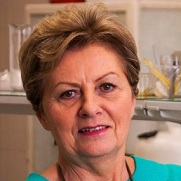Biopolymer-Based Scaffolds for Regenerative Medicine Applications
A special issue of Polymers (ISSN 2073-4360). This special issue belongs to the section "Biomacromolecules, Biobased and Biodegradable Polymers".
Deadline for manuscript submissions: closed (15 June 2022) | Viewed by 9660
Special Issue Editors
Interests: cell culture; cell-biomaterial interactions; biocompatibility; hydrogels; polymers; tissue engineering; regenerative medicine; scaffolds
Special Issues, Collections and Topics in MDPI journals
Interests: biocompatible biomaterials; dental and orthopedics implants; inorganic/organic scaffolds; tissue engineering; regenerative medicine
Special Issues, Collections and Topics in MDPI journals
Special Issue Information
The main role of scaffolds in regenerative medicine applications is to support cell adhesion, proliferation, and differentiation. Thus, such biomaterials should possess biological properties, a structure, and a composition that mimic those of the native extracellular matrix (ECM). Biopolymer-based scaffolds meet most of these requirements and, as a consequence, they have attracted a great deal of attention in the field of tissue engineering. The group of natural biopolymers includes proteins, peptides (e.g., collagen, gelatin, silk, elastin, fibronectin, adhesive peptides, and self-assembled proteins and peptides), and polysaccharides, such as alginate, agarose, chitosan, cellulose, curdlan, and hyaluronic acid. Poly-ε-caprolactone (PCL), polylactic acid (PLA), polyhydroxialcanoates (PHAs), and poly(lactic-co-glycolic acid) (PLGA) are most often used as synthetic biopolymers. It is worth noting that natural and synthetic biopolymers may be used either alone or in combination.
The aim of this Special Issue is to highlight recent advances in the field of regenerative medicine, with particular emphasis on scaffolds consisting of natural and synthetic biopolymers. All articles (original research papers and reviews) are welcome for this Special Issue.
Submitted manuscripts should be primarily (but not only) concerned with:
- biocompatible scaffolds consisting of novel natural as well as synthetic biopolymers;
- biocompatible scaffolds consisting of known natural as well as synthetic biopolymers; or
- new medicinal applications of biopolymer-based scaffolds.
We will mainly promote articles that present a complex description, involve new methods for the fabrication, or evaluate the structural, biological, mechanical, and physicochemical properties of scaffolds containing either natural or synthetic biopolymers for regenerative medicine applications.







